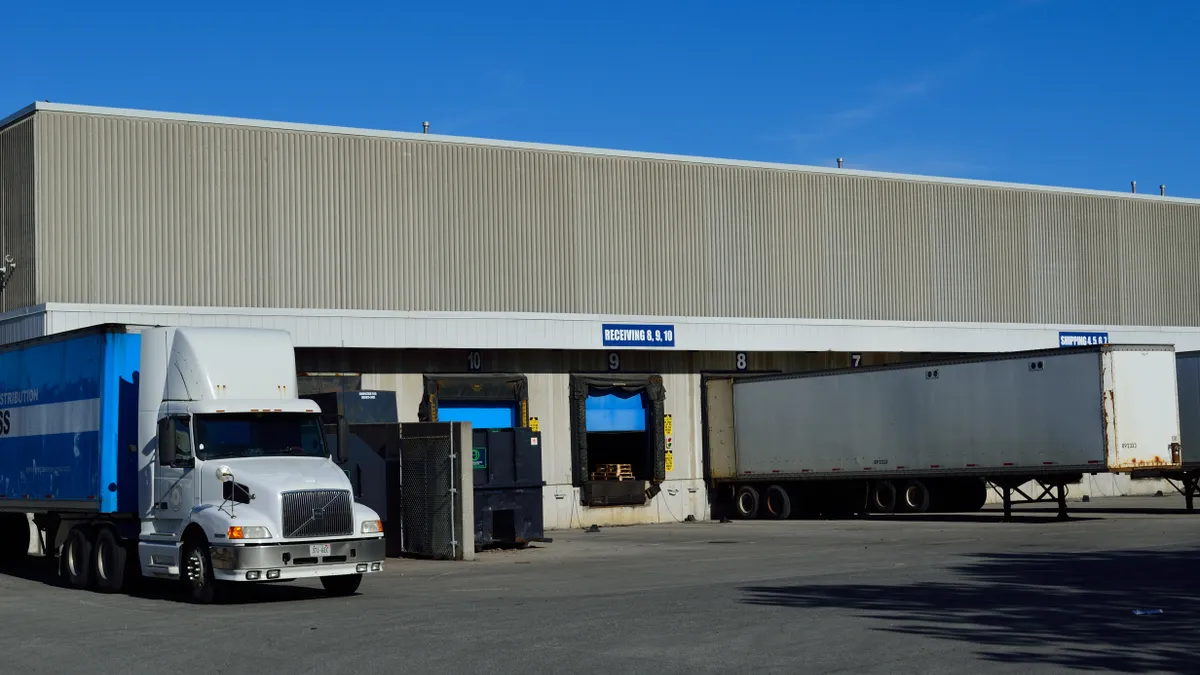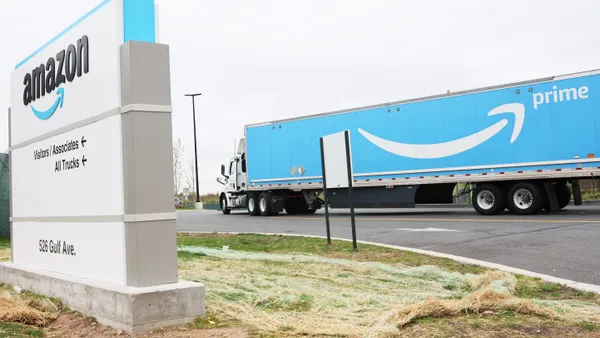Dive Brief:
- Inbound and outbound truck movement is beginning to rise across most of the U.S., FourKites data shows. "Volumes are generally up" after hitting a floor during the week of April 27, Glenn Koepke, VP of network enablement at FourKites, told Transport Dive.
- Load trends for Monday reveal the largest increase in inbound truck movement is in Arizona, at more than 24% compared to a two-week average, while outbound movement surged the most in Alabama, up more than 15%. Arizona's stay-at-home order expired Friday, and Alabama's expired April 30.
- Koepke attributed some of the increase in outbound movement to seasonal trends and the start of produce season. "We will likely see volume continue to uptick as time goes on," particularly in California, Florida and Texas, he said, adding spot rates out of the three states will likely increase as well.
Dive Insight:
The data from FourKites reflects what many industry researchers have observed and predicted: The trucking market has hit the bottom, and a gradual return, although asymmetrical by industry and geography, is in the cards.
To date, the biggest movement increases are in consumer-facing and essential industries. Volumes in food and beverage, CPG and retail are up by 5% to 10%, but manufacturing is up only marginally, according to Koepke.
Even as volume and movement begin to rise, dwell times have not. They've decreased in nearly every state, according to FourKites. Dwell times in major markets are down 10% to 20% compared to the last two weeks' average. "If your driver has to wait 20% less to be loaded or unloaded, it's pretty significant for waiting time cost as well as for driver satisfaction," Koepke said.
The reduced dwell is in part due to more organized loading docks. Facilities are maintaining contactless operations and physical distancing through technology-driven check-in processes for drivers rather than manual log books. They're also managing critical appointments and giving carriers advanced notice of backlogs.
The bigger contributor to shrinking dwell time though, Koepke said, is retail panic buying has subsided. In the earlier days of the pandemic, retailers were placing more orders than usual and procuring large amounts of freight as consumers cleared grocery shelves. "If [retailers] order inconsistently, it is very hard for DCs to load and unload those trucks," Koepke said, which resulted in delays and increased dwell.

Koepke recommended carriers ensure they're in sync with their customers to plan capacity accordingly as volumes rise. He advised shippers to make carriers aware of their projected forecasts.
He warned, however, not to expect sudden jumps in loads. "From what we've seen thus far, it's not like states that open up have massive volume shifts," he said.
Koepke said he expects volumes in industries such as food and beverage and CPG to increase, but heavy industrial and automotive's recovery is still uncertain. "We'll see volume continue to remain down in those industries, likely through Q3."
















